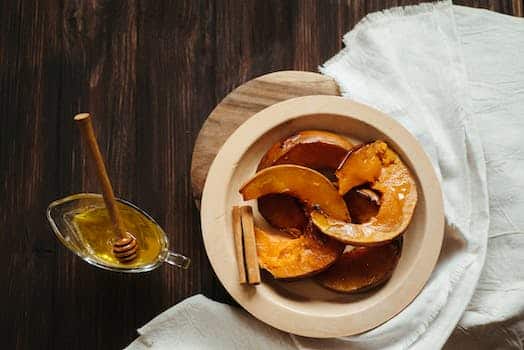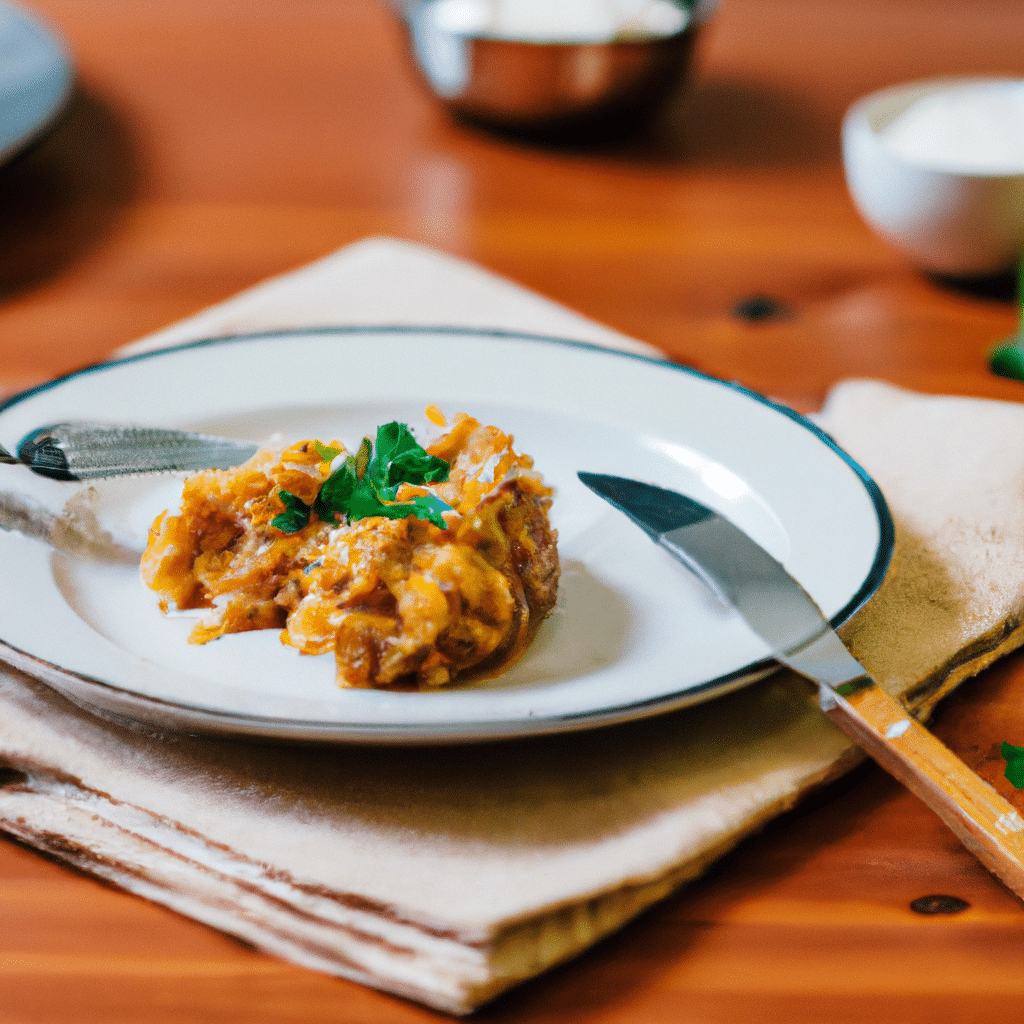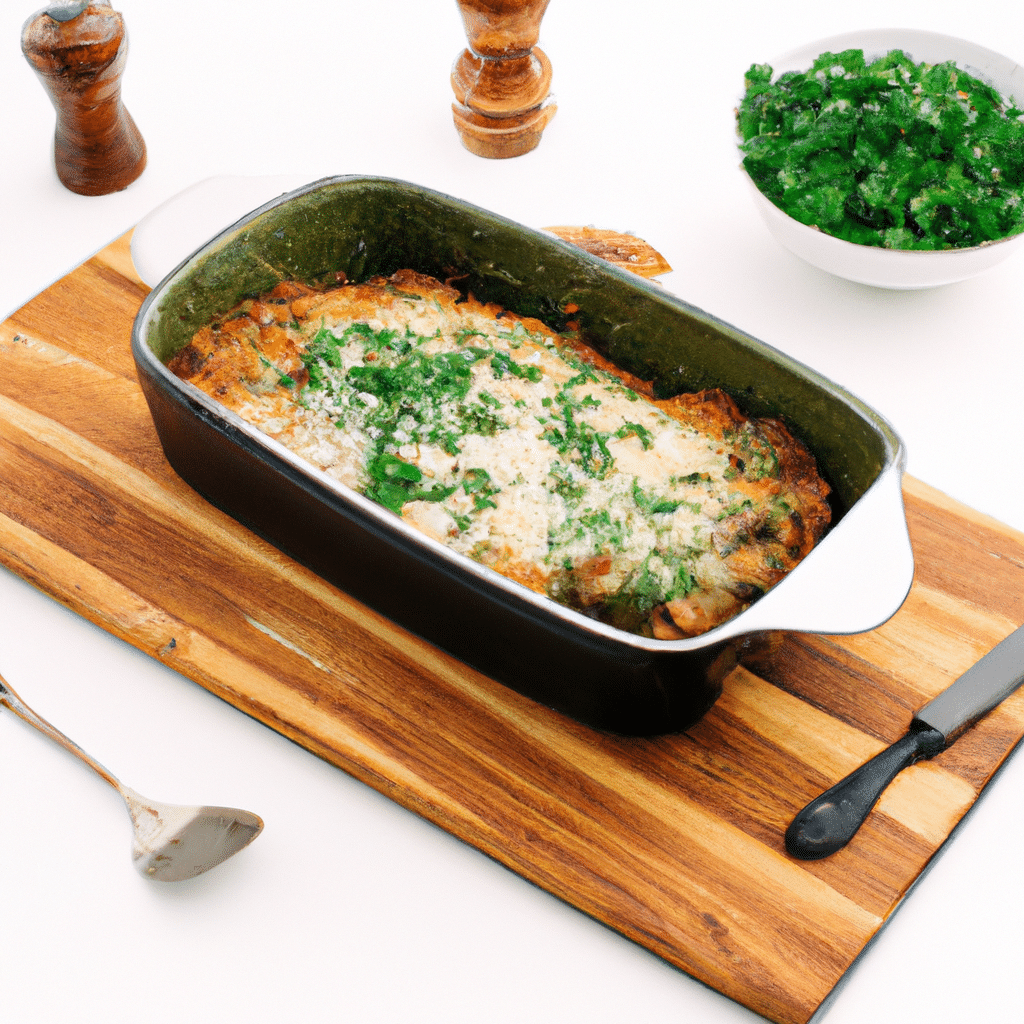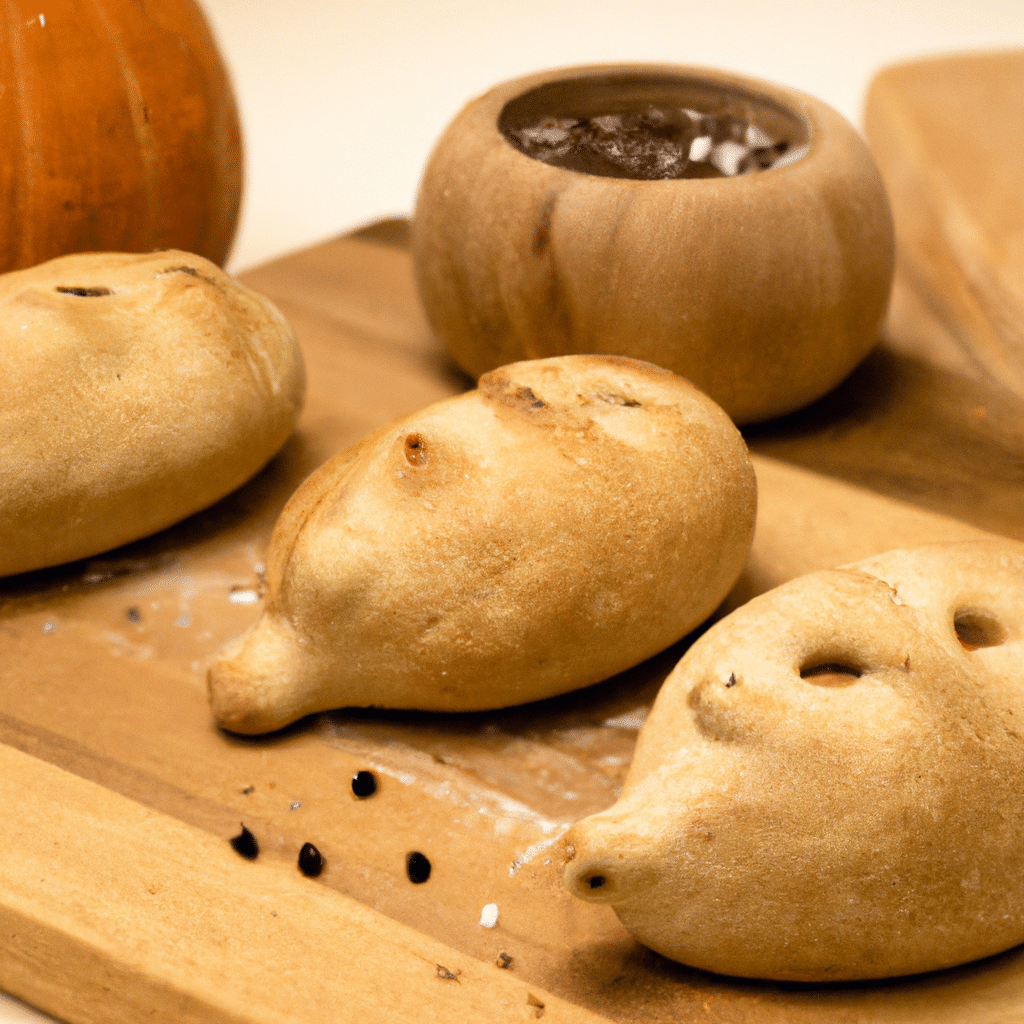Are you looking for scrumptious dinner recipes that are suitable for a gluten-free diet? Look no further! In this article, we will explore a variety of delicious and satisfying dishes that will satisfy your taste buds while adhering to your dietary needs. Whether you are a gluten-free veteran or just starting out on this journey, these recipes will surely become your go-to options for a flavorful and gluten-free dinner.
- 1. Introduction
- 1.1. What is a gluten-free diet?
- 1.2. Benefits of a gluten-free diet
- 1.3. Challenges of following a gluten-free diet
- 1.4. Importance of dinner in a gluten-free diet
- 2. Gluten-Free Dinner Recipe Ideas
- 2.1. 1. Grilled Lemon Herb Chicken with Roasted Vegetables
- 2.2. 2. Quinoa Stuffed Bell Peppers
- 2.3. 3. Salmon with Garlic Parmesan Zucchini Noodles
- 2.4. 4. Mexican Cauliflower Rice Skillet
- 2.5. 5. Eggplant Parmesan with Gluten-Free Pasta
- 3. Tips for Creating Gluten-Free Dinner Recipes
1. Introduction
A gluten-free diet has become increasingly popular in recent years, as more and more people are discovering that they have a sensitivity or intolerance to gluten. Gluten is a protein found in wheat, barley, and rye, and can cause digestive issues and discomfort for those who are sensitive to it. However, following a gluten-free diet doesn’t mean sacrificing delicious and satisfying meals, especially when it comes to dinner. In this article, we will explore a variety of delicious dinner recipes that are gluten-free, ensuring that you can still enjoy flavorful and satisfying meals while maintaining a gluten-free lifestyle.
1.1. What is a gluten-free diet?
A gluten-free diet is a dietary approach that excludes the protein called gluten. Gluten is commonly found in grains such as wheat, barley, and rye. It is also present in various food products, including bread, pasta, cereals, and baked goods. The primary reason for following a gluten-free diet is to manage celiac disease, an autoimmune disorder triggered by gluten consumption. People with celiac disease experience an immune reaction in their small intestine when gluten is ingested, leading to damage and difficulty in nutrient absorption. However, a gluten-free diet is not only suitable for individuals with celiac disease but also for those with gluten sensitivity or wheat allergy. Some people may choose a gluten-free diet as a lifestyle choice or to alleviate certain symptoms. In recent years, the popularity of gluten-free diets has increased, and as a result, there is a wide range of delicious and nutritious gluten-free recipes available to cater to different dietary needs and preferences.
1.2. Benefits of a gluten-free diet
A gluten-free diet has gained popularity in recent years, and for good reason. It is not only beneficial for individuals with gluten intolerance or celiac disease but also for those who simply want to improve their overall health and well-being. By eliminating gluten, a protein found in wheat, barley, and rye, from your diet, you can experience a wide range of benefits.
One of the major advantages of a gluten-free diet is improved digestive health. For individuals with gluten intolerance, consuming gluten can lead to inflammation and damage to the small intestine. By avoiding gluten-containing foods, such as bread, pasta, and pastries, you can alleviate digestive symptoms like bloating, gas, and diarrhea.
Another benefit is increased energy levels. Gluten can cause fatigue and sluggishness in some people, especially those with undiagnosed gluten intolerance. By eliminating gluten from your diet, you may experience a surge in energy, leading to improved productivity and overall well-being.
Additionally, a gluten-free diet can contribute to better nutrient absorption. Gluten can interfere with the absorption of important nutrients like iron, calcium, and vitamin D. By eliminating gluten, your body can efficiently absorb these nutrients, leading to improved overall health.
Furthermore, a gluten-free diet is known to alleviate various skin conditions. Many individuals with gluten intolerance or celiac disease experience skin issues like eczema, psoriasis, or dermatitis herpetiformis. By following a gluten-free diet, these skin conditions can significantly improve or even disappear altogether.
Lastly, a gluten-free diet can aid in weight management. Many gluten-containing foods are high in refined carbohydrates and sugars, which can contribute to weight gain. By opting for gluten-free alternatives and focusing on whole, unprocessed foods, you can maintain a healthy weight or even lose excess pounds.
In conclusion, a gluten-free diet offers numerous benefits, including improved digestive health, increased energy levels, better nutrient absorption, alleviation of skin conditions, and effective weight management. Whether you have gluten intolerance, celiac disease, or simply want to improve your well-being, incorporating gluten-free recipes into your dinner menu can be a delicious and nutritious choice.
1.3. Challenges of following a gluten-free diet
Following a gluten-free diet can present several challenges for individuals. From finding suitable ingredients to dining out at restaurants, there are various obstacles that need to be overcome. One of the main challenges is the limited availability of gluten-free products in grocery stores. Many traditional food items contain gluten, which is a protein found in wheat, barley, and rye. This means that individuals following a gluten-free diet need to carefully read labels and search for alternative products that are certified gluten-free.
Another challenge is the lack of awareness and understanding about gluten intolerance or celiac disease. Some people may not fully comprehend the importance of avoiding gluten and may unknowingly include it in their cooking or food preparation. This can lead to cross-contamination, where even a small amount of gluten can trigger adverse reactions in those with gluten sensitivity.
Additionally, dining out can be a challenge for individuals on a gluten-free diet. Many restaurants may not have a dedicated gluten-free menu or may not be knowledgeable about proper gluten-free food preparation. Cross-contamination can occur in the kitchen, making it difficult for those with gluten intolerance to find safe dining options.
Despite these challenges, following a gluten-free diet is essential for individuals with gluten intolerance or celiac disease. With the right knowledge, resources, and recipe ideas, it is possible to enjoy delicious and satisfying meals while avoiding gluten.
1.4. Importance of dinner in a gluten-free diet
Dinner plays a crucial role in a gluten-free diet as it allows individuals to maintain a healthy and balanced eating routine. Gluten, a protein found in grains such as wheat, barley, and rye, can cause adverse reactions in those with gluten sensitivity or celiac disease. By eliminating gluten from their meals, people can alleviate symptoms and improve their overall well-being.
Moreover, dinner is often the final meal of the day, providing an opportunity to replenish nutrients and fuel the body for overnight repair and rejuvenation. It is essential to make dinner satisfying, delicious, and nutritious, even when following a gluten-free diet.
In this article, we will explore various mouthwatering dinner recipes that are gluten-free, ensuring that individuals can enjoy a diverse range of flavors while maintaining their dietary restrictions. Whether it’s a hearty bowl of gluten-free pasta, a flavorful stir-fry, or a nourishing grain bowl, we have got you covered with delectable options that will please both your taste buds and your health.
2. Gluten-Free Dinner Recipe Ideas
Looking for delicious dinner recipes that are gluten-free? Look no further! We’ve got you covered with these amazing gluten-free dinner recipe ideas. Whether you follow a gluten-free diet or simply want to try something new, these recipes are sure to satisfy your taste buds.
1. Grilled Lemon Herb Chicken with Roasted Vegetables
Ingredients:
– 4 chicken breasts
– 2 tablespoons olive oil
– 2 cloves garlic, minced
– Juice of 1 lemon
– 1 teaspoon dried oregano
– 1 teaspoon dried thyme
– Salt and pepper to taste
– Assorted vegetables (such as bell peppers, zucchini, and onions)
Instructions:
1. Preheat the grill to medium-high heat.
2. In a small bowl, whisk together the olive oil, minced garlic, lemon juice, dried oregano, dried thyme, salt, and pepper.
3. Place the chicken breasts in a resealable plastic bag and pour the marinade over them. Seal the bag and massage the marinade into the chicken.
4. Let the chicken marinate in the refrigerator for at least 30 minutes.
5. Meanwhile, chop the assorted vegetables into bite-sized pieces.
6. Thread the marinated chicken and vegetables onto skewers.
7. Grill the skewers for about 10-12 minutes, turning occasionally, until the chicken is cooked through and the vegetables are tender.
8. Serve the grilled lemon herb chicken with roasted vegetables and enjoy!
2. Quinoa Stuffed Bell Peppers
Ingredients:
– 4 bell peppers
– 1 cup cooked quinoa
– 1 can black beans, drained and rinsed
– 1 cup corn kernels
– 1 cup diced tomatoes
– 1/2 cup shredded cheddar cheese
– 1/4 cup chopped fresh cilantro
– 1 teaspoon cumin
– 1/2 teaspoon chili powder
– Salt and pepper to taste
Instructions:
1. Preheat the oven to 375°F (190°C).
2. Cut the tops off the bell peppers and remove the seeds and membranes.
3. In a large bowl, combine the cooked quinoa, black beans, corn kernels, diced tomatoes, shredded cheddar cheese, chopped cilantro, cumin, chili powder, salt, and pepper.
4. Spoon the quinoa mixture into the bell peppers.
5. Place the stuffed bell peppers in a baking dish and cover with foil.
6. Bake for 25-30 minutes or until the peppers are tender and the filling is heated through.
7. Remove from the oven and let cool for a few minutes before serving.
8. Enjoy these delicious quinoa stuffed bell peppers!
3. Baked Salmon with Garlic and Dijon
Ingredients:
– 4 salmon fillets
– 2 tablespoons olive oil
– 2 cloves garlic, minced
– 2 tablespoons Dijon mustard
– 1 tablespoon honey
– 1 tablespoon fresh lemon juice
– Salt and pepper to taste
Instructions:
1. Preheat the oven to 400°F (200°C).
2. In a small bowl, whisk together the olive oil, minced garlic, Dijon mustard, honey, lemon juice, salt, and pepper.
3. Place the salmon fillets in a baking dish and brush the marinade over them.
4. Bake for about 12-15 minutes or until the salmon is cooked through and flakes easily with a fork.
5. Serve the baked salmon with garlic and Dijon alongside your favorite side dishes.
6. Enjoy this flavorful and healthy gluten-free dinner!
These gluten-free dinner recipe ideas are just a starting point. Feel free to experiment with different ingredients and flavors to create your own delicious gluten-free meals. Happy cooking!
2.1. 1. Grilled Lemon Herb Chicken with Roasted Vegetables
Grilled Lemon Herb Chicken with Roasted Vegetables is a flavorful and healthy gluten-free dinner option. This recipe combines tender, juicy chicken marinated in a tangy lemon herb sauce with a medley of colorful roasted vegetables. It is a perfect dish for those following a gluten-free diet as it is free from any gluten-containing ingredients. The chicken is marinated in a delicious blend of fresh lemon juice, garlic, and herbs, which infuses it with a bright and zesty flavor. The roasted vegetables, such as bell peppers, zucchini, and carrots, provide a satisfying crunch and complement the chicken beautifully. This dish is not only delicious but also packed with nutrients, making it a wholesome choice for a gluten-free dinner. Try this Grilled Lemon Herb Chicken with Roasted Vegetables recipe for a delightful and hassle-free gluten-free dinner option.
2.2. 2. Quinoa Stuffed Bell Peppers
Quinoa stuffed bell peppers are a delicious and healthy option for a gluten-free dinner. Packed with nutrients and flavor, this recipe is sure to satisfy your taste buds. To make this dish, you will need bell peppers, quinoa, vegetables of your choice, and some spices.
Start by preheating your oven to 375°F. Cut the tops off the bell peppers and remove the seeds. In a pot, cook the quinoa according to the package instructions. While the quinoa is cooking, sauté your favorite vegetables in a pan until they are tender. You can use onions, mushrooms, zucchini, or any other vegetables you prefer.
Once the quinoa and vegetables are ready, combine them in a bowl and add your desired spices. You can use salt, pepper, garlic powder, or any other herbs and spices you like. Mix everything well.
Stuff the bell peppers with the quinoa and vegetable mixture and place them in a baking dish. Bake them in the preheated oven for about 25-30 minutes or until the bell peppers are tender.
Once cooked, remove the stuffed bell peppers from the oven and let them cool for a few minutes. Serve them as a main dish or as a side with a fresh salad. These quinoa stuffed bell peppers are not only gluten-free but also packed with protein and fiber, making them a nutritious and satisfying dinner option.
2.3. 3. Salmon with Garlic Parmesan Zucchini Noodles
Salmon with Garlic Parmesan Zucchini Noodles is a delightful gluten-free dinner option that combines the freshness of zucchini noodles with the richness of salmon. This recipe is not only delicious but also packed with nutrients. Zucchini noodles, also known as zoodles, are a great alternative to traditional wheat-based pasta for those following a gluten-free diet. The garlic parmesan sauce adds a burst of flavor to the dish, complementing the tender and flaky salmon perfectly. It’s a healthy and satisfying meal that will leave you feeling satisfied without any gluten-related concerns. Try this recipe for a scrumptious gluten-free dinner option!
2.4. 4. Mexican Cauliflower Rice Skillet
This Mexican Cauliflower Rice Skillet is a fantastic gluten-free dinner option that is both delicious and easy to make. Cauliflower rice is a great alternative to traditional rice for those following a gluten-free diet. Packed with flavor and nutritious ingredients, this skillet meal is sure to satisfy your cravings.
To make this dish, start by heating some oil in a skillet over medium heat. Add diced onions and minced garlic, sautéing until they become fragrant and slightly caramelized. Next, add cauliflower rice and cook for a few minutes until it starts to soften.
Then, add diced tomatoes, black beans, corn kernels, and your choice of Mexican spices such as cumin, chili powder, and paprika. Stir everything together and let it cook for a few more minutes to allow the flavors to meld.
Once the cauliflower rice is tender and all the flavors have blended together, remove the skillet from the heat. Top it with fresh cilantro and a squeeze of lime juice for an extra burst of freshness.
Serve this Mexican Cauliflower Rice Skillet as a main dish or as a side with grilled chicken or fish. It’s a versatile and satisfying meal that will surely become a favorite in your gluten-free dinner repertoire.
2.5. 5. Eggplant Parmesan with Gluten-Free Pasta
For a delicious gluten-free dinner option, try making Eggplant Parmesan with Gluten-Free Pasta. This recipe is a perfect choice for those following a gluten-free diet but still want to enjoy a comforting and flavorful meal. To make this dish, start by slicing eggplants into thin rounds and then dip them in a gluten-free breadcrumb mixture. Next, bake the breaded eggplant slices until they are crispy and golden brown. In the meantime, cook gluten-free pasta according to package instructions. Once the eggplant slices are ready, layer them with marinara sauce, mozzarella cheese, and grated Parmesan cheese in a baking dish. Bake the assembled dish until the cheese is melted and bubbly. Serve the Eggplant Parmesan over a bed of gluten-free pasta for a satisfying and hearty gluten-free dinner.
3. Tips for Creating Gluten-Free Dinner Recipes
When it comes to creating gluten-free dinner recipes, there are a few tips that can help ensure delicious and satisfying meals. Here are some ideas to consider:
1. Start with naturally gluten-free ingredients: Opt for whole foods that are naturally gluten-free, such as fruits, vegetables, lean proteins, and whole grains like rice or quinoa. These ingredients form the foundation of a healthy and flavorful gluten-free dinner.
2. Use gluten-free substitutes: Experiment with gluten-free alternatives for common wheat-based ingredients like flour, pasta, and breadcrumbs. There are plenty of gluten-free flours available, such as almond flour or chickpea flour, which can be used in various recipes.
3. Incorporate herbs and spices: Enhance the flavors of your gluten-free dishes by using a variety of herbs and spices. Not only do they add depth and complexity to your meals, but they also provide additional health benefits.
4. Get creative with sauces and dressings: Many store-bought sauces and dressings contain gluten, so it’s important to make your own or choose gluten-free options. Experiment with different combinations of herbs, spices, oils, and vinegars to create delicious homemade gluten-free sauces and dressings.
5. Don’t forget about dessert: Just because you’re following a gluten-free diet doesn’t mean you have to skip dessert. There are numerous gluten-free flours and baking mixes available that can be used to create mouthwatering gluten-free desserts.
By keeping these tips in mind, you can create a wide variety of delicious dinner recipes that are suitable for a gluten-free diet. Whether you’re a seasoned cook or just starting out, experimenting with different ingredients and techniques will help you discover new and exciting flavors.
3.1. 1. Use gluten-free grains and flours
When creating delicious dinner recipes for a gluten-free diet, it is important to use gluten-free grains and flours. This ensures that the meals are safe and suitable for individuals with gluten intolerance or celiac disease. Fortunately, there are plenty of gluten-free grains and flours available that can be used as substitutes for traditional wheat-based ingredients.
One popular gluten-free grain is quinoa, which is not only nutritious but also versatile in cooking. Quinoa can be used as a base for salads, pilafs, or even as a stuffing for vegetables. Another option is brown rice, which can be served as a side dish or used in stir-fries and casseroles.
In addition to grains, there are various gluten-free flours that can be used in baking. Almond flour, made from finely ground almonds, is a great choice for creating gluten-free desserts like cookies and cakes. Coconut flour, derived from dried coconut meat, is another excellent alternative that adds a unique flavor to baked goods.
When using gluten-free grains and flours, it is essential to read labels carefully to ensure that they have been certified as gluten-free. Cross-contamination can occur during processing, so it is important to look for products that have been tested and labeled as gluten-free. By incorporating these gluten-free alternatives into your dinner recipes, you can enjoy a delicious and satisfying meal while adhering to a gluten-free diet.
3.2. 2. Check ingredient labels carefully
When creating gluten-free dinner recipes, it is important to check ingredient labels carefully. This is crucial to ensure that the recipe is truly gluten-free and safe for individuals following a gluten-free diet. Gluten can be found in many unexpected ingredients, such as sauces, seasonings, and processed foods. By carefully reading the ingredient labels, you can identify any potential sources of gluten and make necessary substitutions or avoid them altogether. Look for labels that clearly state ‘gluten-free’ or ‘certified gluten-free’ to minimize the risk of cross-contamination. Additionally, familiarize yourself with common ingredients that contain gluten, such as wheat, barley, rye, and oats (unless they are specifically labeled as gluten-free). Taking these precautions will help you create delicious and safe gluten-free dinner recipes.
3.3. 3. Incorporate naturally gluten-free ingredients
When creating gluten-free dinner recipes, it is important to incorporate naturally gluten-free ingredients. These ingredients not only add flavor and variety to your dishes, but also ensure that your meals are safe for individuals with gluten intolerance or celiac disease. Here are some tips for incorporating naturally gluten-free ingredients into your gluten-free dinner recipes:
1. Grains and Flours: Opt for naturally gluten-free alternatives such as quinoa, rice, cornmeal, buckwheat, or certified gluten-free oats. These grains can be used to make delicious and nutritious dishes like quinoa salads, rice pilaf, cornbread, buckwheat pancakes, or oatmeal cookies.
2. Proteins: Include protein-rich ingredients that are naturally gluten-free, such as lean meats, poultry, fish, eggs, tofu, legumes, and nuts. These ingredients can be the main focus of your dinner recipes, whether it’s a grilled chicken breast, a fish curry, a tofu stir-fry, or a lentil soup.
3. Vegetables and Fruits: Load your gluten-free dinner recipes with a variety of fresh vegetables and fruits. Not only do they add color and nutrition to your meals, but they also bring a burst of flavors. Incorporate vegetables like broccoli, spinach, bell peppers, mushrooms, and zucchini in stir-fries, salads, or roasted dishes. Add fruits like berries, apples, oranges, or pineapple to salads or desserts for a touch of natural sweetness.
4. Herbs and Spices: Enhance the flavor of your gluten-free dinner recipes with a wide array of herbs and spices. Fresh or dried herbs like basil, thyme, rosemary, or cilantro can be added to marinades, dressings, or sauces. Spices like cumin, paprika, turmeric, or cinnamon can be used to season meat, vegetables, or grains.
5. Dairy and Non-Dairy Products: If you tolerate dairy, incorporate gluten-free dairy products like cheese, yogurt, or milk into your dinner recipes. Alternatively, you can use non-dairy alternatives like almond milk, coconut milk, or soy-based products.
By using these naturally gluten-free ingredients, you can create a wide range of delicious dinner recipes that are safe and suitable for a gluten-free diet.
3.4. 4. Experiment with gluten-free substitutes
When creating gluten-free dinner recipes, it’s important to experiment with various gluten-free substitutes. Gluten is a protein found in wheat, barley, and rye, which can cause digestive issues for individuals with gluten sensitivity or celiac disease. However, there are plenty of alternatives available in the market that can be used as substitutes for gluten-containing ingredients.
One popular substitute for wheat flour is almond flour, which is made from finely ground almonds. It adds a nutty flavor and moist texture to baked goods. Another option is coconut flour, which is high in fiber and adds a subtly sweet taste.
For those who prefer a more neutral taste, tapioca flour or potato starch can be used as thickening agents in sauces and gravies. These gluten-free substitutes help achieve the desired consistency without compromising on flavor.
In addition to flour substitutes, there are also alternatives for other gluten-containing ingredients. For example, instead of regular soy sauce, tamari or gluten-free soy sauce can be used to add flavor to stir-fries or marinades. Similarly, gluten-free pasta made from rice, corn, or quinoa can be used in place of traditional wheat pasta.
Experimenting with different gluten-free substitutes allows for a wider range of flavors and textures in gluten-free dinner recipes. It’s important to read ingredient labels carefully and choose certified gluten-free products to ensure they are safe for consumption. By incorporating these substitutes, individuals following a gluten-free diet can enjoy delicious and satisfying meals without missing out on their favorite dishes.
3.5. 5. Opt for homemade sauces and dressings
When it comes to preparing gluten-free dinner recipes, opting for homemade sauces and dressings can be a great choice. Store-bought sauces and dressings often contain hidden sources of gluten, such as wheat-based thickeners or additives. By making your own, you have full control over the ingredients and can ensure that they are gluten-free.
Creating homemade sauces and dressings is easier than you might think. You can start by experimenting with simple ingredients like olive oil, vinegar, herbs, and spices to create delicious dressings for salads or marinades for meats. For example, a combination of olive oil, balsamic vinegar, Dijon mustard, garlic, and honey can make a tasty gluten-free dressing.
Similarly, you can make flavorful sauces for stir-fries, pasta, or grilled dishes by using gluten-free ingredients. For instance, a homemade teriyaki sauce can be made with gluten-free soy sauce, honey, ginger, garlic, and cornstarch. By using gluten-free alternatives and avoiding pre-packaged options, you can enjoy the flavors you love without worrying about gluten contamination.
Not only do homemade sauces and dressings offer better control over the gluten content, but they also allow for customization based on personal preferences. You can adjust the flavors, sweetness, or spiciness according to your liking. Plus, you can experiment with various herbs, spices, and additional ingredients to create unique and exciting combinations.
In summary, when preparing gluten-free dinner recipes, it’s advisable to choose homemade sauces and dressings. This ensures that you know exactly what goes into your dishes and eliminates the risk of hidden gluten. Get creative in the kitchen and enjoy the freedom of making delicious gluten-free sauces and dressings tailored to your taste.
Conclusion
In conclusion, these delicious dinner recipes for a gluten-free diet offer a wide variety of flavorful options that cater to dietary restrictions without sacrificing taste. With creative ingredient substitutions and innovative techniques, individuals following a gluten-free lifestyle can enjoy satisfying and nutritious meals that are both delicious and beneficial for their overall health.






9 Comments
Malynda Anchie
1 year agoWow, these gluten-free dinner ideas look absolutely amazing! Ive been trying to eat healthier and these recipes seem perfect. Cant wait to give them a try and satisfy my taste buds at the same time. Thanks for sharing!
Aleece Lach
1 year agoWow, these dinner ideas for a gluten-free diet are a game-changer! 😍 Ive been struggling to find healthy and delicious meals that fit my dietary needs, but these recipes have me drooling already! Cant wait to try them out and impress my taste buds. Thanks for sharing!
Coreen Mariand
1 year agoYum! These gluten-free dinner ideas look absolutely mouthwatering! I love how theyre not only healthy but also delicious. Cant wait to try out these tasty recipes and get inspired for my next gluten-free meal. Thanks for sharing! 🍽️
Diahann Hansen
1 year agoThank you for sharing these incredible gluten-free dinner ideas! As a business professional with dietary restrictions, its often challenging to find healthy and delicious options. These mouthwatering recipes have truly inspired me to explore new flavors and get creative in the kitchen. Cant wait to try them out and impress my family and friends with these wholesome meals!
Avivah Aldora
1 year agoAs a normal human visitor, I find the post [object Object] intriguing and relevant to my dietary needs. It is fascinating to discover mouthwatering dinner ideas specifically tailored for a gluten-free diet, which not only promote health but also offer a delicious culinary experience. These recipes serve as a great source of inspiration for those of us following a gluten-free lifestyle, as they provide diverse and flavorful options to explore.
Karrah Crary
1 year agoThank you for sharing these inspiring and flavorful dinner ideas for a gluten-free diet. Its wonderful to see the combination of both health and deliciousness in these recipes. Im looking forward to trying them out and expanding my gluten-free culinary repertoire. Keep up the great work!
Emilie Jessy
1 year agoThese dinner ideas for a gluten-free diet look absolutely scrumptious! I cant wait to try them out and impress my taste buds. Thanks for sharing these amazing recipes!
Laverne Katz
1 year agoThese gluten-free dinner ideas look absolutely scrumptious! I cant wait to try them out and satisfy my taste buds while staying healthy. Thanks for sharing these yummy recipes!
Faustina Nolita
1 year agoWow, these gluten-free dinner ideas are a feast for the eyes and the taste buds! From vibrant salads bursting with flavors to hearty and satisfying mains, this collection has it all. I cant wait to try out the recipe for the grilled salmon with lemon and herbs – it sounds like the perfect combination of freshness and succulence. And lets not forget about the zucchini noodles with avocado pesto, a creative twist on a classic dish that promises a burst of creamy goodness. These recipes have truly redefined the notion that gluten-free meals are bland or boring. A big thank you for sharing these inspiring and delicious options!